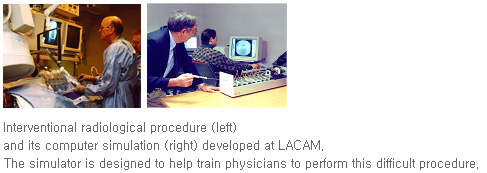
Medical simulations are used for a number of purposes. One of the most promising is the development of surgical simulators. The accepted paradigm for teaching in medicine has been "see one, do one, teach one". Although the methodology has served medicine well, there is a growing interest in the use of computer-based surgical simulators to teach complex surgical procedures. This has been prompted by the prevalence of "minimally-invasive" procedures. Minimally-invasive procedures involve the use of imaging techniques (MRI, CT, ultrasound, laparoscopes) to guide instruments through a small opening in the patient to perform certain surgical procedures. The benefit is the reduced amount of trauma to the patient. However, the procedures have become extremely complex making effective training critical. Personnel from SEAS and SMHS have been involved in a number of research projects that involve computer scientists, electrical engineers, mechanical engineers, and physicians to develop virtual reality simulators that allow physicians to see as well as feel the simulated procedure. This type of training, although of limited use currently, has a great deal of potential in revolutionizing medicine in much the same way that flight simulators have revolutionized pilot training. Similar technology can be used to guide physician to place an instrument (e.g. biopsy needle) at a precise location on the patient using imaging techniques along with computer guidance. We intend to leverage our current expertise in these areas to continue developing sophisticated simulators with the intention of expanding their use in training physicians as well as in the operating room.
